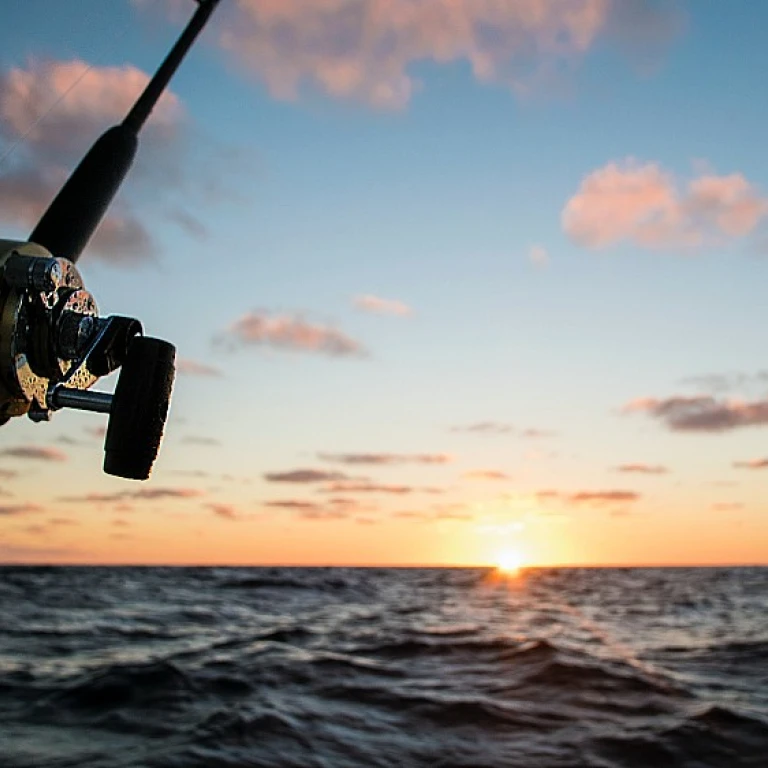Understanding the Importance of a Reliable Anchor
Why a Dependable Anchor Matters for Pontoon Boats
When it comes to anchoring your pontoon boat, understanding the crucial role a reliable anchor plays is essential. It's not just about stopping your boat at a picturesque spot on the river; it's about ensuring safety and stability in a variety of water conditions. For pontoon boats, which are often used for family outings and recreational activities, having the right boat anchor is indispensable.
Pontoon boats are typically used in shallow waters, which can make them more susceptible to drifting, especially with unexpected weather changes or water currents. A sturdy anchor not only keeps your boat securely in place, but also prevents potential damage that could occur from drifting into rocks, other boats, or shallow regions with sand.
Selecting the best anchor is also a matter of balancing price and product quality. Though you might be tempted to go for the most affordable option, investing in a high-quality pontoon boat anchor ensures durability and effectiveness over time. It's important to consider factors such as the anchor's weight, the anchor chain, and whether you require a rope chain or an anchor winch, such as the stainless steel options available.
Moreover, it's essential to familiarize yourself with the correct anchoring techniques. Think of it as part of your routine boat maintenance. Knowing how to set and retrieve your anchor properly will save you time and prevent unnecessary wear and tear.
For more on making the best selections for your boating and fishing gear, don't forget to check out
this helpful guide on choosing the right wading boots to enhance your overall fishing experience.
Types of Anchors Suitable for Pontoon Boats
Exploring Anchor Options for Pontoon Boats
Selecting the best anchor for your pontoon boat is crucial to ensure stability and safety on the water. These versatile vessels require reliable anchoring solutions to prevent drifting, especially in various water conditions.
Pontoon boats often navigate through shallow waters or sandy shores, making anchor selection a bit nuanced. Here are common types of anchors used for these floating platforms:
- Box Anchor: Renowned for its efficiency in different types of riverbeds, the box anchor provides superior holding power by digging into various seabeds. Its collapsible design makes it a practical choice for those seeking convenience.
- Mushroom Anchor: Ideal for soft bottoms like mud or sand, this type of anchor can effectively hold smaller pontoons or those within enclosed water bodies. While often more affordable, their grip may be less dependable in swift currents.
- Fluke Anchor: Recognized for its lightweight and efficient holding capacity, especially in sand, this anchor is an optimal option for those who aim for a reliable hold without the bulk.
- Grapnel Anchor: Best suited for smaller vessels or as secondary anchors, this model is frequently used by enthusiasts with jet skis or small boats due to their easy storage and flexibility in rocky or shallow water areas.
In addition to choosing the right style anchor, consider complementing it with a high-quality stainless steel anchor chain and a durable anchor rope to enhance stability. An anchor winch can simplify the process of setting and retrieving your boat anchor, providing efficiency and safety on your trips.
For those looking to explore more about fishing gear, such as
choosing the right wading boots for your fishing adventures, delve into our detailed guides for more insights and advice on equipping your pontoon boat with the best products. Choosing the right equipment not only enhances your boating experience but also ensures that every journey is enjoyable, safe, and free of unnecessary hassles.
Factors to Consider When Selecting a Pontoon Anchor
Key Considerations for Selecting the Best Anchor for Your Pontoon
Choosing the right anchor involves several critical factors, each playing an essential role in ensuring a safe and effective boating experience. Let's explore the most important considerations when selecting an anchoring solution for your pontoon boat.
- Weight and Size of the Anchor: The right weight and size depend on your pontoon boat's size and weight. A small pontoon boat might not need a heavy anchor, while a larger pontoon may require more substantial anchoring.
- Seabed Composition: The type of waterbed your pontoon boat anchors to will influence your choice. Common options include sand, mud, or rocky bottoms. For sandy bottoms, a box anchor provides good hold.
- Water Depth: The depth of the water affects anchoring. In shallow water, you might require a different style anchor compared to deeper waters.
- Anchor Chain and Rode: Consider the anchor chain and rode length and materials. Stainless steel chains add durability while offering less drag. The combination of anchor rope and chain enhances holding capability.
- Wind and Current Conditions: These factors influence anchor choice. Anchors optimized for high-wind conditions secure your boat even under challenging weather.
When purchasing, consider the overall price and potential deals like free shipping and sales. It's also wise to explore messages from online reviews and forums to gauge user satisfaction and experiences with specific products.
For further storage optimization of your fishing gear, check out this guide on how to
store your gear efficiently.
How to Properly Set and Retrieve Your Anchor
Setting and Retrieving Your Anchor Correctly
When venturing out with your pontoon boat, setting your anchor effectively can be the difference between drifting aimlessly and stable docking. The anchoring process not only ensures safety and stability but also preserves the anchor's longevity.
A significant starting point is choosing the right anchor style for your specific boating needs. Once you've sorted this, follow these tips for proper anchoring:
- Selecting the Spot: Before dropping the anchor, find a suitable area with enough depth and minimal obstacles such as rocks or underwater debris. Consider the type of sea or riverbed under you (sand, mud, gravel) and the weather conditions.
- Use Adequate Scope: The length of the anchor rope or chain (anchor rode) you deploy should ideally be six to seven times the depth of the water where you are anchoring. This ensures that the angle of pull remains horizontal, increasing holding power.
- Deploying the Anchor: Gradually lower the anchor overboard while maintaining a steady pace to avoid tangles in the rope or chain. Allow it to touch the bottom before slowly backing the boat to lay out the rode.
- Secure the Anchor Line: Once the anchor is set, secure the rope or chain to a cleat on the bow. Ensure it is tied with a reliable knot, and use a rope chain if necessary for additional security.
- Retrieving the Anchor: To pull up the anchor, slowly maneuver the boat over the anchor point as you retrieve the rope or chain using a manual pull or an anchor winch if available. A box anchor may require a slight forward motion to break free from the bottom.
Remember, avoiding abrupt movements with your pontoon boat can prevent you from losing your grip on shallow water or disturbing the anchor setting. Thoughtful anchoring not only aids in maintaining the condition of the boat anchor but also enhances your overall boating experience. Maintaining vigilance and adapting to varying water conditions will lead to safer and more enjoyable outings. As a best practice, periodically check and maintain all anchoring equipment, ensuring longevity and reliability.
Maintenance Tips for Longevity of Your Anchor
Keep Your Anchor in Top Shape
Maintaining your anchor is crucial for ensuring it's ready for each outing on your pontoon boat, whether you're setting sail in a vast river or enjoying a day on a peaceful lake. Consistent care will not only preserve the integrity of the anchor but also save money in the long term. Here are some key tips for anchor upkeep:
- Inspect your anchor regularly for signs of wear and corrosion, especially if it's made of stainless steel. This quick check will help in identifying any cracks or rust accumulation that might need addressing.
- Rinse with fresh water after every trip. Salt, sand, and other debris can accumulate on your anchor and chain. A thorough rinse will keep these elements from causing damage over time.
- Lubricate the moving parts. If your boat includes an anchor winch or other mechanical components, ensure they are well-lubricated to avoid seizing or unnecessary stress during operations.
- Store properly when not in use. If your anchor is not permanently fastened to the boat, keep it in a dry and secure spot to prevent unnecessary exposure to the elements.
- Replace the anchor rope or chain as needed. Regularly check the anchor rope and chain for fraying or weakening, ensuring they are robust enough to handle your pontoon boat's anchoring needs.
By staying on top of these maintenance routines, you'll extend the life of your anchor and ensure it provides reliable service, keeping your pontoon boat safely moored under various conditions. Whether you're dealing with shallow waters or a strong river current, a well-maintained anchor boat will perform better and keep you worry-free during your adventures. Always consider quality over the initial sale price, as a good product will provide more value in the long run. A range of options is available across online shops, and many offer free shipping and swift delivery to support your boating need. Remember, a little attention to your anchor can prevent larger issues and keep your water excursions smooth and enjoyable.
Common Mistakes to Avoid with Pontoon Anchors
Avoiding Common Anchoring Pitfalls
Understanding the nuances of anchoring your pontoon can prevent common missteps, ensuring a smoother experience on the water. Here are crucial points to keep in mind:
- Selecting the Right Anchor for Conditions: The choice between styles like box anchors or fluke anchors can dramatically affect how well your boat stays in place, especially in varying water conditions such as rivers or shallow waters.
- Ensuring Sufficient Scope: The scope, or the length of anchor rope or chain relative to water depth, is vital. Too short a scope can cause drift. A common recommendation is a 7:1 ratio, adjusting based on wind or current strength.
- Correctly Setting and Retrieving: Without proper technique, even the best anchor won't serve its purpose. Gently lower the anchor until it touches the sand or riverbed, allowing the line to pay out smoothly until the chain is taut.
- Thinking About Anchor Accessories: Don't forget the role of the anchor winch, anchor chain, and anchor rode. Each component contributes to effective anchoring, from easy retrieval to holding power in shallow waters.
- Compromising on Quality: Whether considering stainless steel for longevity or evaluating delivery and sale price options, quality shouldn't be overshadowed by cost. A reliable product isn't about the price tag but durability and function.
- Proper Storage: Securely store your anchor, chain, and any additional gear when not in use. This practice not only extends their lifespan but also ensures safety aboard your pontoon.
Purchasing the right product and employing it correctly will prevent many of the headaches associated with anchoring a pontoon boat. Taking into account these pointers will likely save time and stress, giving more opportunity to enjoy your boating endeavors without disruption.

